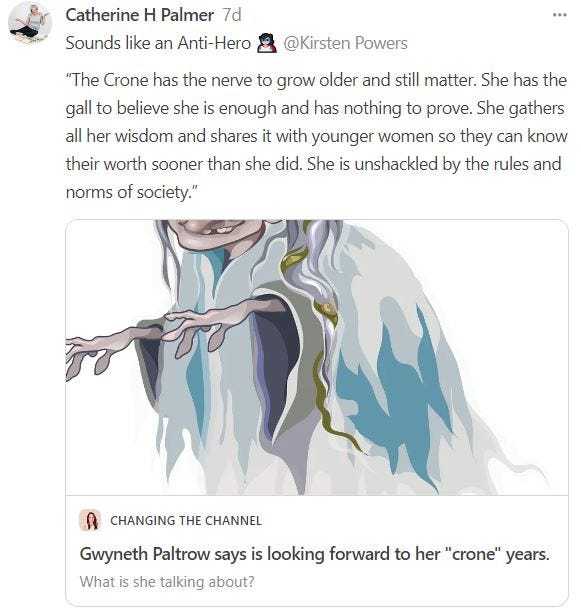What might have been, what?
Where stick season came early
It’s fall festival time in Vermont. Over the holiday weekend, RVs as big as my house blocked traffic waiting to turn into the scenic view rest stop on Route 2. At the height of land, their passengers posed for photos against a background of low clouds and rusty foliage.
Downtown, flannel-bedecked tourists in shearling-cuffed boots sweated straight-faced through the farmer’s market and vintage stores, looking vaguely disappointed. They drank IPAs and queued up Noah Kahan on iTunes—stick season came early.
The leaves this year have been slow to turn and quick to drop. The maple trees that line our road went from green to gold to shriveled-up brown, skipping their brilliant crimson show for a muted protest against summer’s flooding rains and October’s heat wave.
It’s been nearly six years since I met the life wizard. I’m still learning the lessons she imparted, and every day, I think about this one particular question she asked on our first call: How can you write your story if you don’t know what it is?
It reminded me of the quote I had pinned to my cubicle wall in my office. “It’s never too late to be what you might have been.”
I liked the inside joke of displaying it at work—a reminder that I wasn’t meant for corporate life and could quit and start anew anytime. The sentiment was encouraging, though misguided. Never too late, sure. But who knows what might have been?
I’ve written about this topic before, and before sending this postcard, I checked to see if my views had changed.
No. No, they haven’t.
For most people, the ability to pursue what “might have been” is impossibly out of reach. Sunday newspapers and advertisements for financial planners feature early retirees realizing their fantasy avocations. Obviously, they “might have been” cheesemakers, wooden boat builders, or mindfulness gurus instead of investment bankers, corporate lawyers, and sales executives.
If I had taken a cue from social media or the authors on my bookshelf, I might have been an organic flower farmer, restauranteur, or First Lady instead of a mid-level marketing manager. But it’s never too late to find my life’s true purpose in Rome, India, and Bali, or perhaps a Tuscan villa.
So why did I start my reinvention by calling a life wizard?
I guess my years of business training kicked in. Every strategic planning meeting, every project kick-off, and every goals-setting brainstorm begins with a different version of the same question: What problem are you trying to solve?
The problem is—
My problem is—
Me. I’m the problem.
I didn’t realize this until she asked, How can you write your story if you don’t know what it is? The view from where I stood that cold winter night in my kitchen was unclear.
How could I become “what might have been” without knowing (and trusting) who I was?
Like those out-of-state tourists anticipating the Hallmark movie version of autumn in Vermont, I suspected I was missing something amazing. Unlike them, I won’t have to leave home to find it.
I’ll tell you about my move to Vermont in next week's postcard.
Catherine
This week’s prompt: What might have been…
You saw that one coming, didn’t you? Okay fine. Now, take a deep breath and write.
Why Substack?
Emails are hard to manage. Twitter/X is in shambles. Threads doesn’t know what it is yet. Instagram is nothing but ads, and the memes on Facebook are out of control.** Where do you go? Substack.
Incredible writing from Heather Cox Richardson (Letters from an American) to Emily Nunn (The Department of Salad) to Patti Smith (Patti Smith!) and thousands of others on every topic you can imagine.
Download the Substack app where you can read Midlife Anti-Hero and join conversations with thousands of writers and millions of readers in a format that you curate (not the algorithm).
Here are a few Substack writers you might enjoy.
Recently,
of Oldster asked her readers what we consider “middle-aged” and I answered.And then there’s this from
**(No offense, Felix. You have the best memes).








